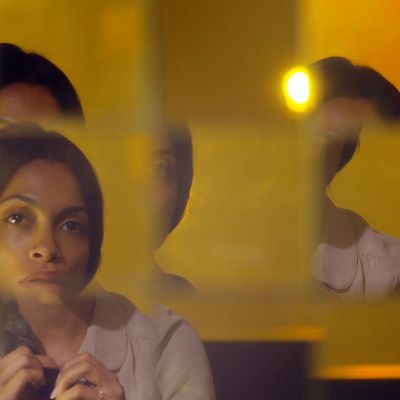
Danny Boyle’s Trance is all twists. It starts off as a caper picture narrated by art auctioneer Simon (James McAvoy), who lays out the complex precautions involved in protecting paintings like the Goya about to be sold for tens of millions — shortly before a crew of well-informed thieves bursts in and spirits the masterpiece off. The opening montage alone confirms that Boyle is our greatest living shallow director. Every high-speed shot is from a different, canted angle: up, down, sidelong, with different depths of field. But there is no discontinuity — there is no continuity to be dissed. His pieces are all of a piece.
Among the many tricks of Trance is that you’re never sure who the hero is. Simon is slippery, and Franck (Vincent Cassel), the head of the gang of thieves, is all sleek Gallic menace. When the painting is stolen from them that stole it, the only clues to its whereabouts lie in the darker recesses of Simon’s mind — which can only be accessed via hypnosis by a seductive therapist named Elizabeth (Rosario Dawson). Is Dr. Femme a fatale? Or is there yet another twist coming that will throw the story into a different light?
The premise could have been sold to Boyle as a chance to prove he can make a movie more visually transporting than Inception at a tenth the price. Boy, does he. Trance has none of Christopher Nolan’s Higher Fancies but is the far more virtuosic weave. That said, the plot gets so pretzeled up that you can almost hear the writers’ joints cracking. To like Trance as much as I did, you have to revel in the senseless showmanship — in watching Boyle indulge his taste for cinematic flight, in this case teasing you with the old “Is this real or a dream?” number so artfully that you don’t care that much about the answer.
And hail to the director for giving Dawson a role this juicy, to the point where she dominates the picture. She’s quick-witted and exotically gorgeous, a reincarnated Egyptian princess with the movies’ most insolent philtrum. She could give you the trance of your dreams.
This review appeared in the April 8, 2013 issue of New York magazine. Additional material has been added since it was first published.


